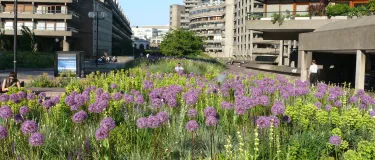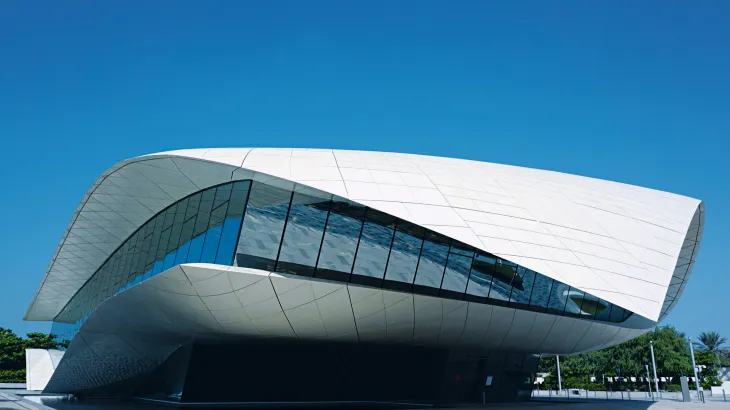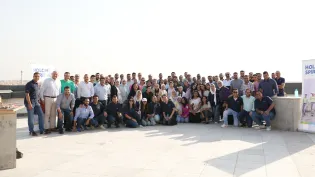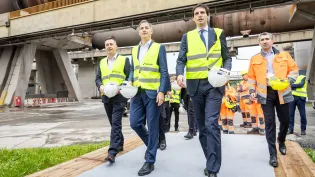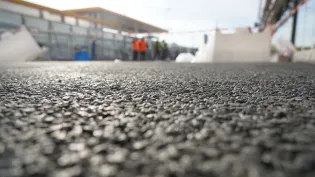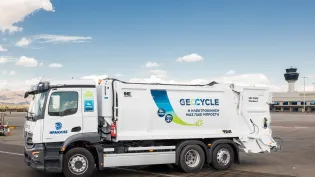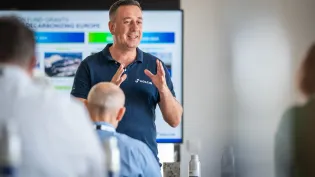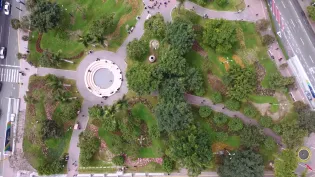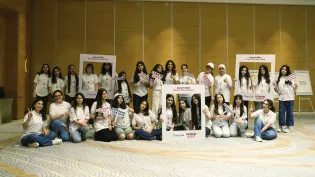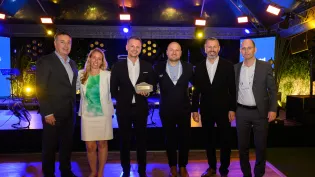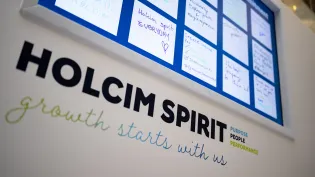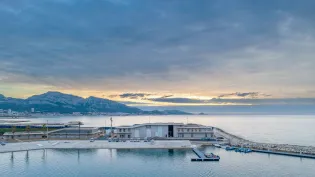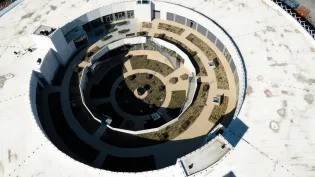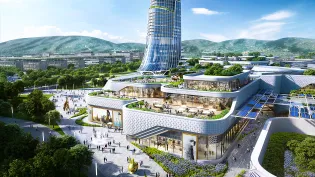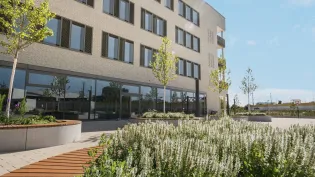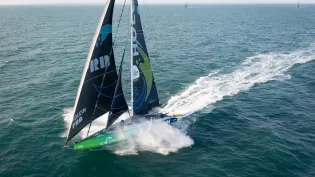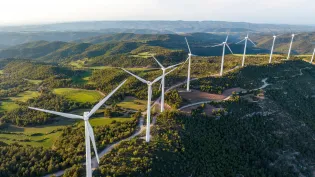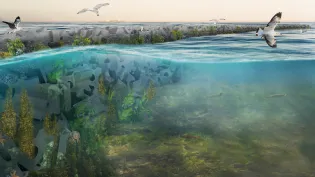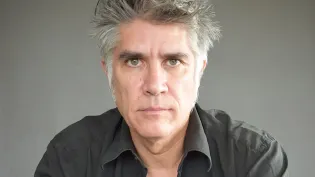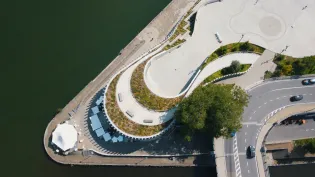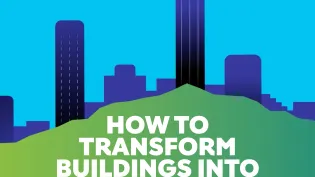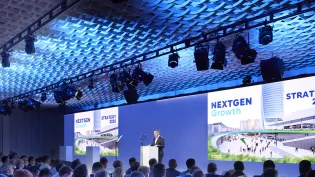Making cities greener and more energy efficient with ZinCo
Aesthetically pleasing? Check. Temperature control? Check. Combating the urban heat island effect? Check. Enhanced stormwater management capabilities? Check. Allowing biodiversity to thrive? Check.
The benefits of green – or vegetative – roofs and surfaces in cities are many. ZinCo, one of the leading companies in the green roof market that we welcomed to the Holcim family in 2024, is a pioneer and innovator, with spectacular projects all around the world.
DID YOU KNOW?
ZinCo was a pioneer in the green roof market with its first core Environmental Product Declaration (EPD) in 2020. An EPD is an independently verified document that communicates a product’s environmental impact—think of it as the equivalent of a nutrition facts label for construction materials. With the latest 2025 verification, almost all products within the ZinCo green roof systems are now included, enabling customers to access comprehensive Life Cycle Assessment (LCA) data, including project-specific versions, in a well-structured format. Learn more about what an EPD is and why it matters here.
‘Living roofs’ can cool and insulate
Living, green roofs are a unique and fresh way to conserve energy. A rooftop garden is not only aesthetically pleasing, it provides temperature control while combating the urban heat island effect and offers enhanced stormwater management capabilities.
Plants can reduce the amount of heat a building absorbs, which reduces air conditioning use by up to 75% according to some estimates. A recent University of Cardiff study found that green roofs and walls can also cool local temperatures by between 3.6°C and 11.3°C, making our cities more livable during the hotter months of the year.
Unpacking the urban heat island effect
Cities are hotter than surrounding areas. The urban heat island effect describes the elevated temperature differential between urban and rural environments due to the greater density of heat-absorbing surfaces like roads, roofs, and buildings.
"Heat islands" affect communities by increasing peak energy demand, air conditioning costs, air pollution and greenhouse gas emissions. Trees and other plants have a natural cooling effect, making vegetation a simple and effective way to reduce heat islands.
Green roofs have a layer of plant material that absorbs water like a sponge. This captures water when it rains, slowly releasing it through evaporation and plant use. Green roofs can significantly reduce the amount of rain water that would otherwise run off an impervious roof. Retention green roofs have an additional cavity underneath to temporarily retain precipitation and relieve the sewerage system, especially during heavy rainfall.
By allowing biodiversity to thrive in cities, green roofs also reverse biodiversity loss. Studies show that birds use such roofs as stopover habitats during migration and foraging habitats during the breeding season, helping to mitigate habitat loss due to increasing urbanization. They also provide a good forage source for bees and other important urban pollinators.
ZinCo roofs around the world
ZinCo is a leader in advanced green roofing systems based in Germany, with global operations across Europe, Asia and the Americas. The company has been working on long-term, effective solutions for rooftops across the world for over 40 years.
Green roofs are an important component of water-sensitive cities and cities’ climate adaptation strategies. ZinCo provides a range of systems to improve cities’ resilience and citizens’ wellbeing, from standard green roofs to roof gardens, and retention green roofs to a combination of green roofs with solar, making them a perfect match for Holcim's sustainability aspirations.
Research projects and innovative systems developed by ZinCo have inspired architects and clients to plan both private and large public buildings in a holistic and sustainable way.
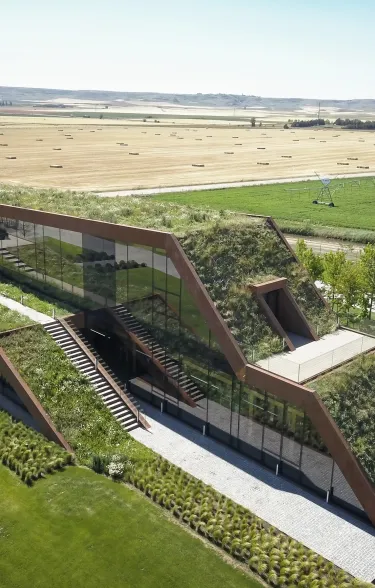

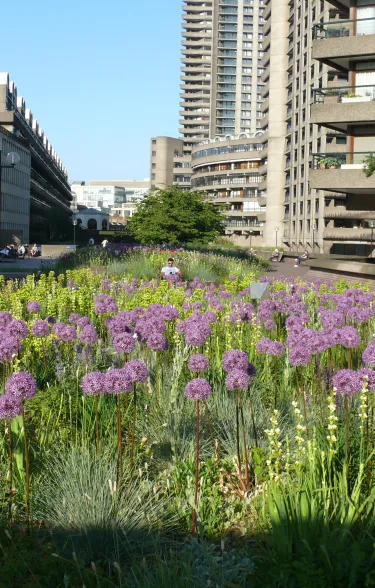
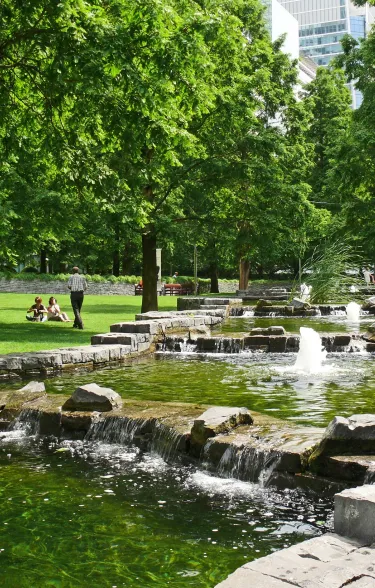
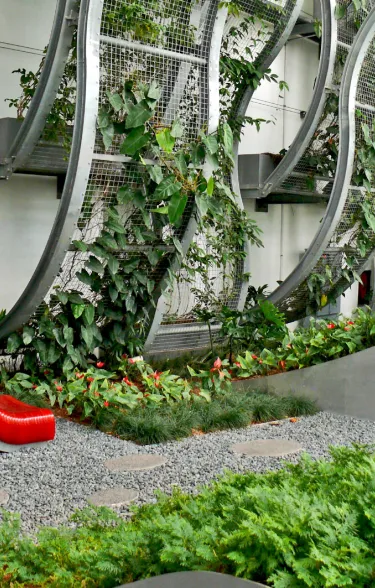
Green roof on office building in Villamartín de Campos, Spain
The modern headquarters of Farming Agrícola, a family business involved in the agricultural sector, showcases its innovation strength. Located on a 32 hectare site, with approximately 1,000 m² of planted roof area, this unique building is eye-catching from every angle.
This is thanks both to the roof areas that reach down to the ground and the light and graceful elegance of the glass facades. This was made possible with different ZinCo system build-ups required for the different roof pitches of up to 40–45°. Mediterranean Flowering Meadow “vegetation mats” ideally suit the hot arid climate in this region of Spain.
More information about the project here.
Barbican Beech Gardens, London
Beech Gardens, part of the Barbican Estate in the City of London, was laid out in the 1970 and required a refurbishment and replanting in 2015. Based on a new design concept, reduced maintenance and the removal of a permanent irrigation system to decrease water consumption were the main requirements.
To achieve this, the landscape architects opted for a naturalistic meadow-like flower-rich vegetation that would be robust and drought-resistant enough to tolerate low water availability throughout the year and require little maintenance. Thanks to its high water retention capacity, the long-proven ZinCo “Roof Garden” build-up system was chosen to provide a balanced water-air supply, drain off excess water and, at the same time, store sufficient water, given the absence of any additional irrigation.
More information about the project here.
Jubilee Park Canary Wharf, London
Jubilee Park is a haven of peace, a green lung within the dense urban centre of Canary Wharf. With its central meandering water feature, 22 fountains and pools, the park is a pleasant setting for occasional art exhibitions.
It was established for the Golden Jubilee celebration of Queen Elisabeth II in 2002, and was named after that anniversary. The ZinCo system used was a build-up using Elastodrain®, which provides a very high compressive strength, whilst protecting the waterproofing during construction works. It provides a solid base for creative surface design and ensures a long lasting drainage.
More information about the project here.
Fusionopolis, Singapore
Fusionopolis is a high-rise commercial complex made up of three high-rise towers for both local and international companies. In this project, sky gardens and green roofs played a special role in striking a balance between the intended landscape design and the practical use for the occupants.
These roof gardens have dense vegetation with trees of up to five meters in height and shrubs of up to 1.5 meters. Additionally, many small gardens feature on balconies in the outdoor areas. The project designers opted for ZinCo’s Floradrain® FD 60 system, which is ideal for extensive greening and simple intensive greening, as well as for walkways and terrace coverings on roof surfaces.
More information about the project here.
Intensive or Extensive green roofs?
Intensive green roofs or ‘rooftop gardens’, are designed to support a diverse array of vegetation, including trees, shrubs, flowers, even small water features. The depth of the growing medium can range from 15 to over 60 cm, providing ample space for root growth and plant diversity. Since this makes the roofing system heavier it requires robust structural support and regular watering, fertilizing, pruning and weeding are required.
Intensive green roofs are ideal for buildings that can support their weight and are often used in commercial properties, residential buildings and public spaces where aesthetic and recreational needs are the priority. They are typically accessible.
In contrast, extensive green roofs are lightweight and low-maintenance. They feature a shallow growing medium, typically 8 to 10 cm deep, and are planted with hardy, drought-resistant vegetation such as sedums, grasses and mosses. These roofs are primarily functional. Because they are lighter than intensive roofs, they place less stress on building structures. Extensive green roofs are suitable for buildings where budget constraints and structural limitations are important, and are typically inaccessible.
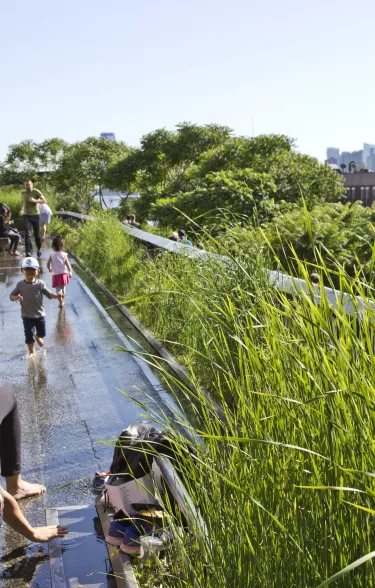

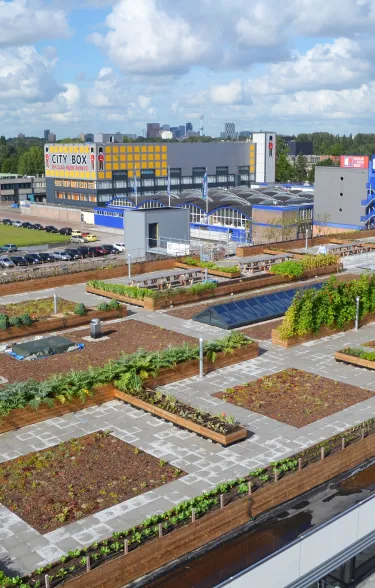
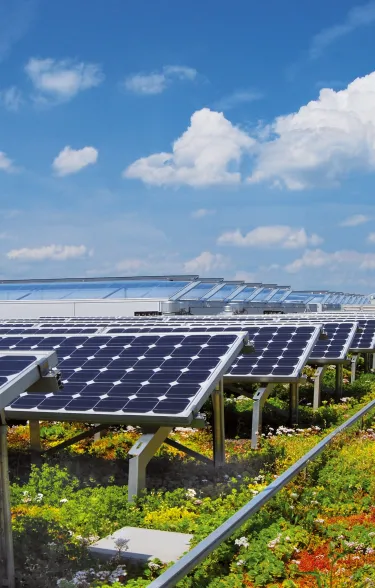
The High Line, New York City
More than just a park, The High Line is a public space where you can view art, walk through gardens, experience a performance, enjoy food, or just connect with friends and neighbors – while enjoying a unique perspective on New York City.
Built on a historic, elevated freight line, the High Line has become a world-renowned inspiration for how cities can transform industrial infrastructure into beautiful, hybrid public spaces. Thanks to the green spaces enabled by ZinCo’s Floradrain® FD 25-E system, some 210 plant species thrive at a height of five to nine meters, with a substrate depth of about 450 mm.
More information about the project here.
Rooftop farm in Zuidpark, Amsterdam
The Zuidpark, originally dating back to the 1970’s, consists of two office buildings and was renovated completely and adapted to today’s technical standards in 2012. Staff at this commercial complex can grow their own fruits and vegetables on a dedicated part of the almost 300 m² roof. On the rest of the surface, vegetables are grown for use in the office canteen.
To make this rooftop farm possible, the project used the following ZinCo system build-ups: “Urban Rooftop Farming” on the proven Floradrain® FD 40-E element, as well as “Sedum Carpet” with Fixodrain® XD 20.
More information about the project here.
Munich Technology Center, Munich
Munich Technology Centre (MTZ) supports founders and young entrepreneurs during their foundational and growth phases. On the 2,500 m² roof a photovoltaic system is combined with an extensive green roof.
Individual frames for the solar system are each mounted on ZinCo’s 1 × 2 meter Solar Base Plate SB 200 and covered with substrate. ZinCo’s Fallnet® SB 200 Rail fixing device was installed, to allow for safe working in roof perimeter areas.
More information about the project here.





